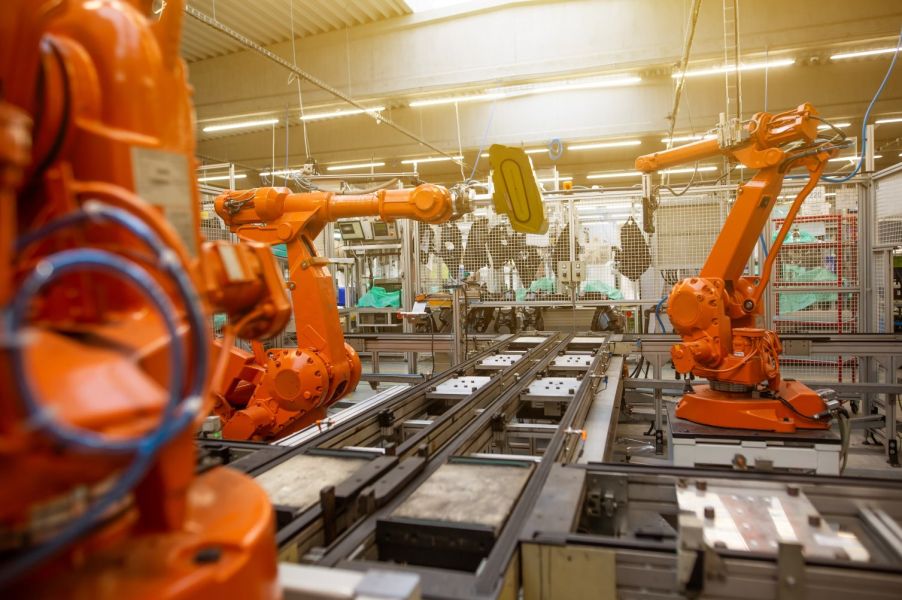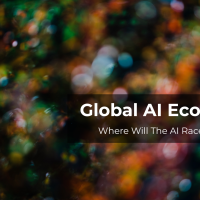
This is the century of robots and machine intelligence,” some people might have that thought in mind. As we look around our modern life, we are surprised by how staggeringly it has changed with the evolution of advanced technologies. We are stepping further into a scenario in which we can achieve and access what we used to dream of in sci-fi movies or fiction. One of such unattainable fantasies that is increasingly becoming real is the usage of robots in our daily lives.
The idea of robots has always been associated with future generations and distant possibilities, but now, it is becoming a reality in our present world. The integration of robots into various sectors is poised to significantly reshape the future of work, economic productivity, and daily life. As revolutions in robotics and artificial intelligence (AI) continue to evolve, understanding the benefits and implications of these technologies becomes more crucial than you think. This analysis explores the potential advantages and robotics examples in the future, supported by reliable statistics and insights from recent studies.
Productivity and Economic Growth

Robots possess the power to boost economic growth, which is one of the most prominent advantages we can anticipate. By 2035, the World Economic Forum projects that the combined effects of artificial intelligence and robotics and greater productivity and efficiency across a range of industries will quadruple economic growth in industrialized nations. By 2030, the robotics industry is expected to be worth $260 billion, largely due to the substantial contributions made by professional service robots, which carry out activities like delivery and cleaning.
In accordance with the International Federation of Robotics, there were over 3.9 million operational robots in the world in 2024, indicating an increasing tendency toward automation in both the industrial and service sectors. Predictions indicate that by 2025, machines will be able to do more work than people, but that for the next five years, there will still be a net gain of 58 million new jobs created globally.
Changes in Employment and Creation
As we look toward the future, there’s a lot of buzz about how automation might shake up the job market. Sure, there are concerns about some jobs disappearing, but let’s flip the script and focus on the positives. Robots are also set to open up a whole new world of job opportunities. According to a report by the World Economic Forum, while automation might replace around 75 million jobs by 2022, it could also create an astounding 133 million new roles! This shift highlights the importance of reskilling and upskilling so that workers can smoothly transition into these emerging positions.
One exciting area of job creation is collaborative robots or cobots. These helpful machines are built to work alongside humans, and they take on tasks that are either too heavy or monotonous, and in doing so, they boost our productivity and safety. As businesses start incorporating more robots into their operations, we’re going to see new job roles popping up, such as robot programmers, maintenance specialists, and overseers. These roles will require human professionals with advanced technical skills, and it makes now a great time to learn and grow in these fields.
Improvements in Both Quality and Efficiency
Robots are becoming more and more capable of carrying out activities that humans cannot do with accuracy and dependability. AI advancements make it possible for robots to navigate challenging surroundings and communicate with people more successfully, especially in fields like computer vision and natural language processing. In healthcare settings, for example, surgical robots can conduct complex procedures with excellent accuracy, reducing recuperation periods and increasing patient outcomes.
For organizations, the efficiency of robots also means huge cost savings. AI-driven predictive maintenance systems can use performance data analysis to predict equipment failures, possibly saving firms a significant amount of money on unplanned downtime, which is estimated to cost the automotive components sector $1.3 million every hour.
Implications for Society and Life Quality
By doing monotonous and repetitive jobs, robots could enhance quality of life when they become more integrated into daily life. This change might free people up to concentrate on more enjoyable and creative pursuits, like personal growth. Robots might, for instance, automate domestic tasks, giving families more time to be together or engage in hobbies.
Furthermore, when robots proliferate, they might potentially be important in resolving pressing societal issues like an aging population. Caregiving robots could help the elderly with everyday tasks so they can be more independent and have a higher quality of life.
There Are Still Obstacles and Things to Think About
Even with all of the advantages, there are drawbacks to the growing popularity of robots. Particularly for blue-collar workers, job displacement is a major source of anxiety. According to research, the employment-to-population ratio may fall and salaries may reduce by 0.42% for every 1,000 workers added to the workforce in the United States. This effect is particularly noticeable in industries where robot adoption is stronger, such as manufacturing.
In order to equip the workforce with the skills needed in a future when automation becomes more common, the educational system also needs to change. According to a survey, 54% of workers would require a substantial reskilling in order to fully leverage the opportunities that technology presents.
Conclusion
Looking ahead, robotics holds the power to transform the way our economies grow now as well as in the further future, how jobs are created, and the quality of our lives. Sure thing. There might be challenges like job shifts and the need to learn new skills, but the potential benefits are huge, from boosting productivity and efficiency to enhancing overall well-being. As industries persist in evolving with robotic technologies, it’s imperative that we foster our workforce for what’s coming up ahead. This journey will require collaboration between businesses, governments, and educational institutions to navigate the exciting yet complex future of technology. Together, we can guarantee that these advancements lead to a bright and prosperous future for everyone.

Founder Dinis Guarda
IntelligentHQ Your New Business Network.
IntelligentHQ is a Business network and an expert source for finance, capital markets and intelligence for thousands of global business professionals, startups, and companies.
We exist at the point of intersection between technology, social media, finance and innovation.
IntelligentHQ leverages innovation and scale of social digital technology, analytics, news, and distribution to create an unparalleled, full digital medium and social business networks spectrum.
IntelligentHQ is working hard, to become a trusted, and indispensable source of business news and analytics, within financial services and its associated supply chains and ecosystems









